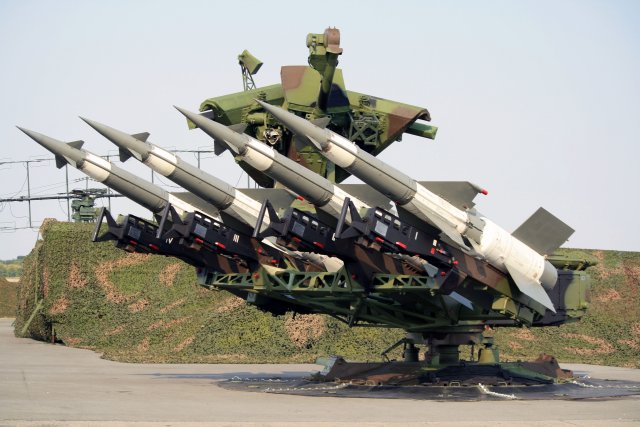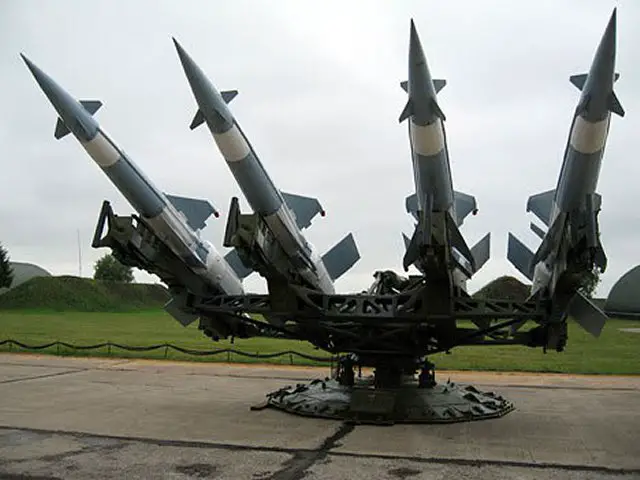India to upgrade its S-125 Pechora SAM systems 32006164
A
|
|
|||
|
Military Defense Industry Technology - SAM systems India
|
|||
|
|
|||
| India to upgrade its S-125 Pechora SAM systems | |||
|
India will upgrade its S-125 Pechora (NATO reporting name: SA-3 Goa) surface-to-air missile (SAM) systems, using only local defense companies, a source in Indian defense industry said."The related tender worth USD272 million to upgrade 16 Indian Air Forces` (IAF) Pechora SAM systems under the 'Make in India' program was issued in May 2016.
|
|||
|
|
|||
 S-125 Neva/Pechora surface-to-air missile system (Photo: Wikipedia) S-125 Neva/Pechora surface-to-air missile system (Photo: Wikipedia) |
|||
|
|
|||
|
These weapons are supposed to be refurbished, fully digitized and integrated with Integrated Area Command and Control System (IACCS). The systems will receive upgraded guidance radar. The aforementioned upgrade will extend the service life of the IAF`s Pechoras by 10 or even 15 years. It includes full digitalizing of the SAM systems, enhancement of communications and networking, upgrade of target acquisition systems", the source said. He added that Indian defense industry has matured to build several types of electronic subsystems intended for anti-air weapons "Indian companies have mastered several technologies to build electronics for SAM systems. The most sophisticated components could be procured from overseas companies and built under license in India", the source pointed out. However, he added, Indian defense industry is not ready to conduct Pechora`s digitization to full extent. "Unfortunately, Indian defense industry lacks the capability to fully digitize Pechora SAM systems. We will have to team with our foreign partners in order to upgrade these weapons. Establishing partnerships and joint ventures would be the best option in such case", the source emphasized. He added that the related proposals to upgrade Indian S-125 systems were sent to Tata Power, Larsen and Toubro, Reliance Defense, Offset India Solutions and Bharat Electronics Limited. |
|||
|
|
|||
 |
|||
|
|
|||
|
According to the source, Indian government has decided to involve both public and private defense companies to upgrade S-125s. "These SAM systems (Pechora) were originally produced by the subsidiaries of Russian Almaz-Antey company, which prefers to cooperate with only public, not private defense enterprises", he pointed out. The source emphasized that the extension of Pechoras` service life is pivotal. "The IAF commenced the exploitation of S-125 SAM systems in the 1970s to protect airfields and critical assets of the India`s Defense Ministry. In total, 30 Pechora units were deployed. They are outdated for the most part, and the extension of their service life is immediately required to keep them in service. Previously, the IAF were willing to acquire 18 medium-range SAM systems (MRSAM) developed in close cooperation with Israel. However, the development of Indian components of the MRSAM systems has been delayed due to several reasons. In the light of such postponement, the upgrade of S-125 matches the needs of the IAF to full extent," the source pointed out. In accordance with the IAF`s requirements, Indian defense industry will digitize the Pechora`s control unit, antenna post, subsystems of SAM launchers, tracking and coordinating systems, missile-command generating systems and launch-computing devices. The winner of the contract is to deliver 16 fully digitized S-125 Pechora firing units within 42 months. Despite its age, S-125 short-range SAM system remains in service with several national armed forces. Russia continued to supply S-125 and to upgrade previously developed systems after the collapse of the Soviet Union. According to the Stockholm International Peace Research Institute`s (SIPRI) arms transfers database, Moscow has supplied S-125 Pechora/Pechora-2M SAM systems since 1991. These anti-air weapons have been delivered to Egypt (30 Pechora-2Ms), Mongolia (2 Pechora-2Ms and 75 V-600 SAM missiles), Myanmar (1 Pechora-2M and 50 V-600 SAM missiles), Syria (12 Pechora-2Ms), Tajikistan (1 Pechora-2M and 50 V-600 SAM missiles), Venezuela (11 Pechora-2Ms and 550 V-600 SAM missiles) and Vietnam (3 Pechora-2TMs). S-125 Pechora-2M modification is developed by Russian-Belarusian joint venture (JV) Defensive Systems (Oboronitelnie Systemy). It has a maximum operational range of 20 km and a maximum operational altitude of 32 km. The systems includes eight mobile launching units based on Belarusian MZKT-8021 wheeled truck, command post, 39N6E Kasta-2E2 surveillance radar based on KAMAZ wheeled truck and several other systems. Pechora-2M features KRTZ-125-2M electronic warfare (EW) protection suite intended for elimination of air-launched anti-radiation missiles, such as AGM-88 High-speed Anti-Radar Missile (HARM). Pechora-2M`s mobile launching unit has a combat weight of 31,150 kg, a crew of three servicemen, a maximum road speed of 40 km/h and a deployment time of 25 min. Each mobile launching system is armed with two 5V27DE SAM missiles. |
|||




























